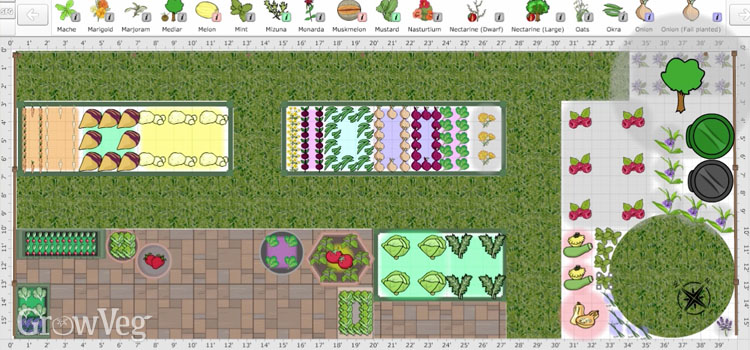

#Bbc virtual garden planner license
Legal Statement: This product was developed under a license to intellectual property owned by the Institute of Molecular Biotechnology (IMBA) of the Austrian Academy of Sciences. Overall, these results reveal a remarkable self-organization of corticofugal and callosal tracts with a functional output, providing new opportunities to examine relevant aspects of human CNS development and disease. These cultures exhibit active neuronal networks, and subcortical projecting tracts can innervate mouse spinal cord explants and evoke contractions of adjacent muscle in a manner dependent on intact organoid-derived innervating tracts. Single-cell RNA sequencing reveals various cortical neuronal identities, and retrograde tracing demonstrates tract morphologies that match proper molecular identities.

The resulting thick axon tracts display various morphologies, including long-range projection within and away from the organoid, growth-cone turning, and decussation. Here we have adapted air–liquid interface culture to cerebral organoids, leading to improved neuronal survival and axon outgrowth. However, it remains to be seen whether these tissues can model circuit formation with functional neuronal output. Neural organoids have the potential to improve our understanding of human brain development and neurological disorders. This technology could be widely used in modeling brain and other organ development, developmental disorders, developmental pharmacology and toxicology, and drug screening. This one-stop microfluidic technique enables a simple, scalable, and repeatable organoid culture method that can be used not only for human brain organoids but also for many other human organoids including liver, kidney, retina, and tumor organoids. Moreover, transient on-chip THC treatment also decreased spontaneous firing in these organoids. Under on-chip exposure to the psychoactive cannabinoid, $\Delta$-9-tetrahydrocannabinol (THC), cerebral organoids exhibited reduced neuronal maturation, downregulation of cannabinoid receptor type 1 (CB1) receptors, and impaired neurite outgrowth. These one-stop microfluidic assembled cerebral organoids not only recapitulate early human brain structure, biology, and electrophysiology but also have minimal size variation and hypoxia. By incorporating perfusable culture chambers, air-liquid interface, and one-stop protocol, this microfluidic platform can simplify the fabrication procedure and produce a large number of organoids (169 organoids per 3.5 cm × 3.5 cm device area) without fusion, as compared with conventional fabrication methods. Here, we developed a one-stop microfluidic platform to assemble and culture human cerebral organoids from human embryonic stem cells (hESC) to investigate the effect of PCE on early human brain development. Prenatal cannabis exposure (PCE) influences human brain development, but it is challenging to model PCE using animals and current cell culture techniques. (F) An additional population of Ki-67+ cells is found in an outer subventricular zone-like region (arrowheads). (E) Proliferating progenitor cells labeled by Ki-67 (green) localize along the ventricle, nuclei are counterstained with DAPI (blue). Organization of the layers recapitulates early corticogenesis observed during human brain development. (D) CTIP2, a marker of the developing cortical plate, co-localizes with β-tubulin III+ neurons in a cortical plate-like region. β-tubulin III+ neurons (green) are adjacent to the ventricular zone. (C) PAX6+ apical progenitors (red, enclosed by dotted line) are localized to a ventricular zone-like region. (B) Immunohistological analysis on cryosections of cerebral organoids reveals cortical regions within the organoid labelled by the apical progenitor marker PAX6 (red) and neuronal marker β-tubulin III (green). Cerebral organoids at this stage are made up of phase-dark structures that may be surrounded by regions of thinner, more translucent structures that display layering (arrowheads).

(A) A representative phase-contrast image of a whole cerebral organoid at day 40 generated using the STEMdiff™ Cerebral Organoid Kit. Tissue and Cell Culture Dissociation Reagents.Work at STEMCELL View Current Opportunities >


 0 kommentar(er)
0 kommentar(er)
